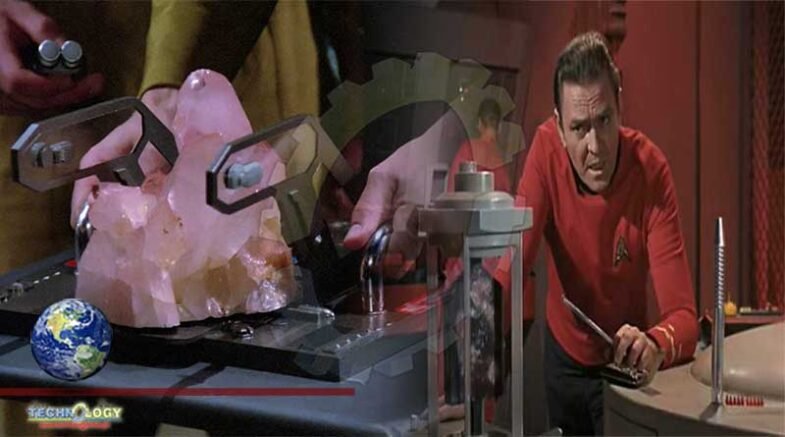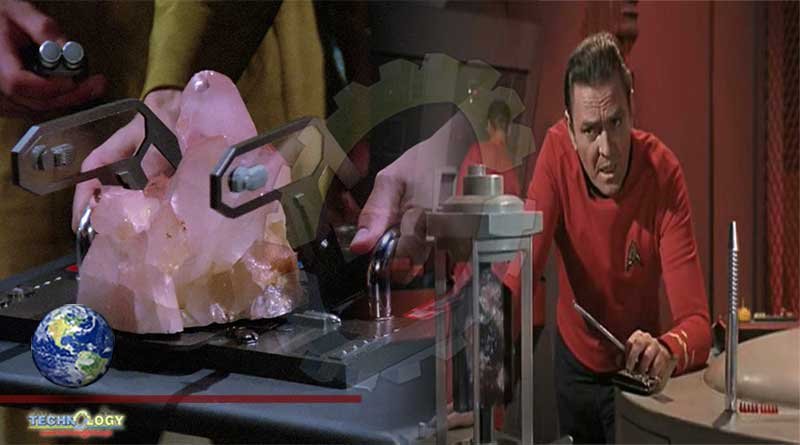Dilithium crystals are a crucial part of the science of Star Trek. Warp drive technology doesn’t work without dilithium, and is no fun at all.

Dilithium crystals are a crucial part of the science of Star Trek. Warp drive technology doesn’t work without dilithium, and no warp drive means no space battles, no Federation, and basically, no fun at all. As many Star Trek fans know, the fictional scientific innovations on the series often inspire similar innovations in the real world. So, is dilithium even a real substance? How do dilithium crystals work in the show? And can scientists use this substance to create a warp drive in the real world someday?
Here’s what you need to know.
Dilithium Crystals Are Pivotal to the Plot of ‘Star Trek’
Given that dilithium is so important to the operation of warp drives, it’s not surprising that the hunt for dilithium is a frequent plot point in Star Trek. While some fans think of dilithium as the “fuel” for warp cores, it’s more accurate to think of dilithium as a regulating agent. The “fuel” is blend of matter and antimatter, and power is drawn from the reaction between the two. The reaction is modulated through a dilithium crystal “converter assembly”.
An example of one of these assemblies can be seen in the TOS episode Elaan of Troyius, which features a space princess with jewelry made out of dilithium. The material also gets mentioned in a second season episode of Discovery, entitled An Obol for Charon, wherein Stamets makes mention of his hope that the spore drive can replace dilithium drive warp cores, citing ecological damage and political issues caused by the practice of mining dilithium. Mining conditions in dilithium quarries had previously been seen on-screen in DS9, in the episode Indiscretion, as well as at the penal colony of Rura Penthe in Star Trek VI: The Undiscovered Country.
As for the question of whether a warp drive technology powered by dilithium crystals could ever be created in the real world, the expert opinion appears to be “not likely”. In his book The Physics of Star Trek, author Lawrence M. Krauss writes that warp drive is about as likely as time travel.
“There is reason for hope, but I must admit I remain skeptical,” he wrote on pages 60 and 61. “Like my colleague Stephen Hawking, I believe that the paradoxes involved in round-trip time travel rule it out for any sensible physical theory. Since virtually the same conditions of energy and matter are required for warp travel and deflector sheilds, I’m not anticipating them either.”
Dilithium Can’t Be Replicated
In an interesting aside, it is not possible to replicate dilithium in the Star Trek universe, although most other matter can be replicated. According to one Reddit thread, a possible in-universe explanation for this may be the structure of dilithium itself. According to fan speculation in that thread, dilithium crystals might have a structure similar to Widmanstätten patterns, a unique type of crosshatching that appears on the surface of items like meteorites, but only when they cool very slowly over a long period of time. That process cannot be rushed or replicated inside of a laboratory, potentially explaining why it can’t be replicated, even by sci-fi technology that’s centuries ahead of the 21st Century.
There is some speculation among fans that not all dilithium is created equal. ScreenRant’s Thomas Bacon has argued that the existence of different types of the same crystal could explain some of the confusing “rules” around dilithium that have sprung up across decades of Star Trek lore, a theory that could have implications for future seasons of Discovery, or any Star Trek media that discusses “The Burn”.
“There’s some evidence that the word ‘dilithium’ may be a short-form way of referring to a whole family of crystalline substances, each of which could potentially have slightly different properties,” Bacon writes. “That may explain why Po’s process [in Discovery] took some decades to become widespread across Starfleet, and indeed why Spock developed a new process in Star Trek: The Voyage Home; he may have been working with a different crystal from the same family. This would also fit with the Star Trek: Voyager episode Threshold, in which the Voyager crew discovered a new form of dilithium on an asteroid field in the Delta Quadrant.”
Originally published at Heavy
